Celebrate the Spirit of Rapa Nui
Each February, the remote island of Rapa Nui (Easter Island) transforms into a living stage for one of the most unique cultural celebrations in the world — the Tapati Festival. This annual event isn’t just a festival; it’s a living expression of Polynesian pride, family honor, and ancient heritage.
The Tapati Festival 2026 in Chile promises to be bigger, bolder, and more colorful than ever, inviting travelers to dive into the rich traditions of the island’s ancestors. From body painting and traditional dances to thrilling competitions like the haka pei (sliding down a volcano on banana trunks), this is a festival that captures the very soul of Rapa Nui culture.
History and Origins of Tapati Festival
The Tapati Rapa Nui Festival began in the 1960s as a way to preserve the island’s traditions and strengthen community identity. Over time, it evolved into a two-week cultural extravaganza, blending ancient Polynesian customs with modern artistic flair.
The word “Tapati” means “week,” but in essence, it represents much more — a time when locals honor their ancestors, gods, and island spirit through music, art, dance, and ritual.
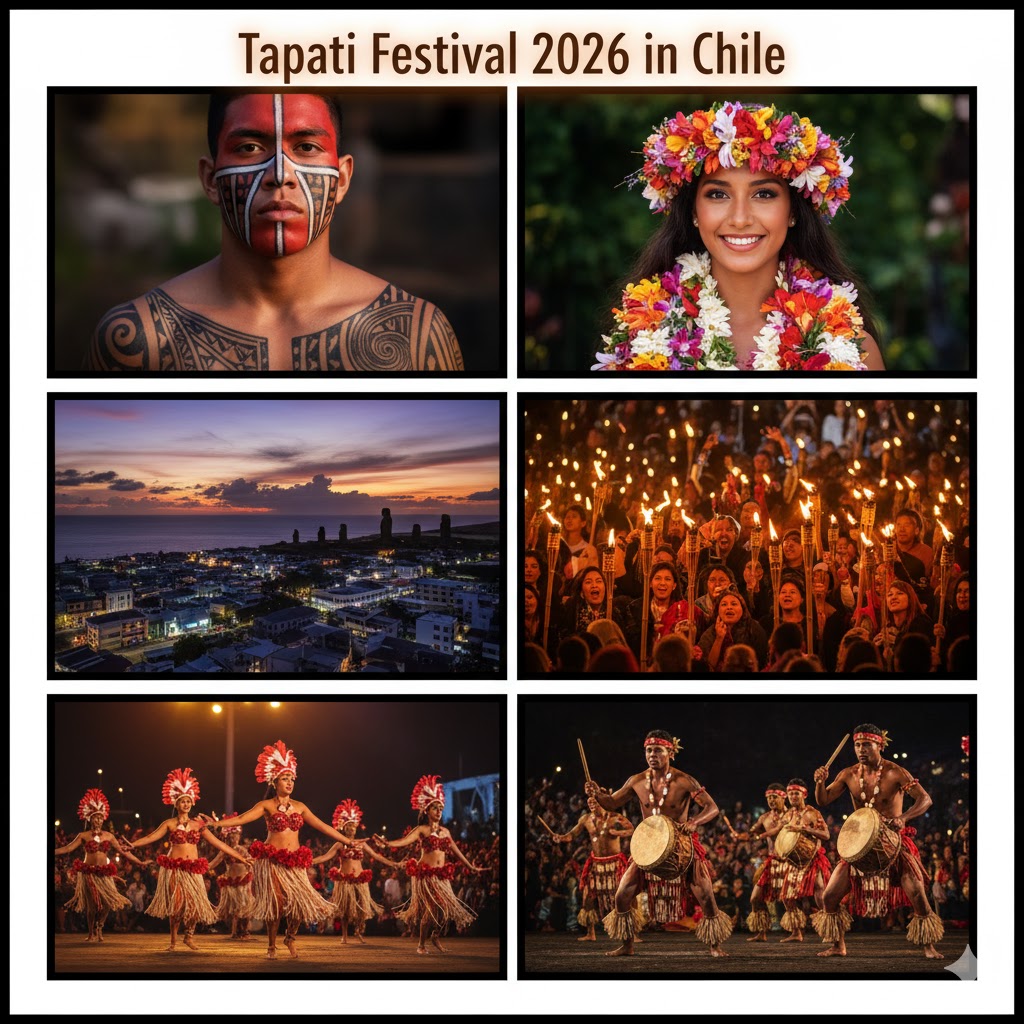
Each year, two families or clans compete for the title of Queen of Tapati, symbolizing unity and pride. Every performance and competition contributes to their scores, making it a festival full of friendly rivalry and deep emotional significance.
When and Where: Dates for Tapati Festival 2026
- Dates: Early February 2026 (Exact dates TBA – typically first two weeks of February)
- Location: Hanga Roa, Easter Island, Chile
Easter Island, located about 3,500 km off the Chilean coast, is one of the most isolated inhabited places on Earth, but during Tapati, it feels like the center of the world.
The entire town of Hanga Roa turns into a stage, with events spread across beaches, open-air arenas, and volcanic hillsides.
Top Highlights of Tapati Festival 2026
1. The Haka Pei – The Ultimate Adrenaline Challenge
One of the most anticipated events, the Haka Pei features brave island men sliding down the slopes of the Maunga Pu’i volcano on banana trunks, reaching speeds up to 80 km/h. It’s not just a sport — it’s a test of courage and respect for ancestral strength.
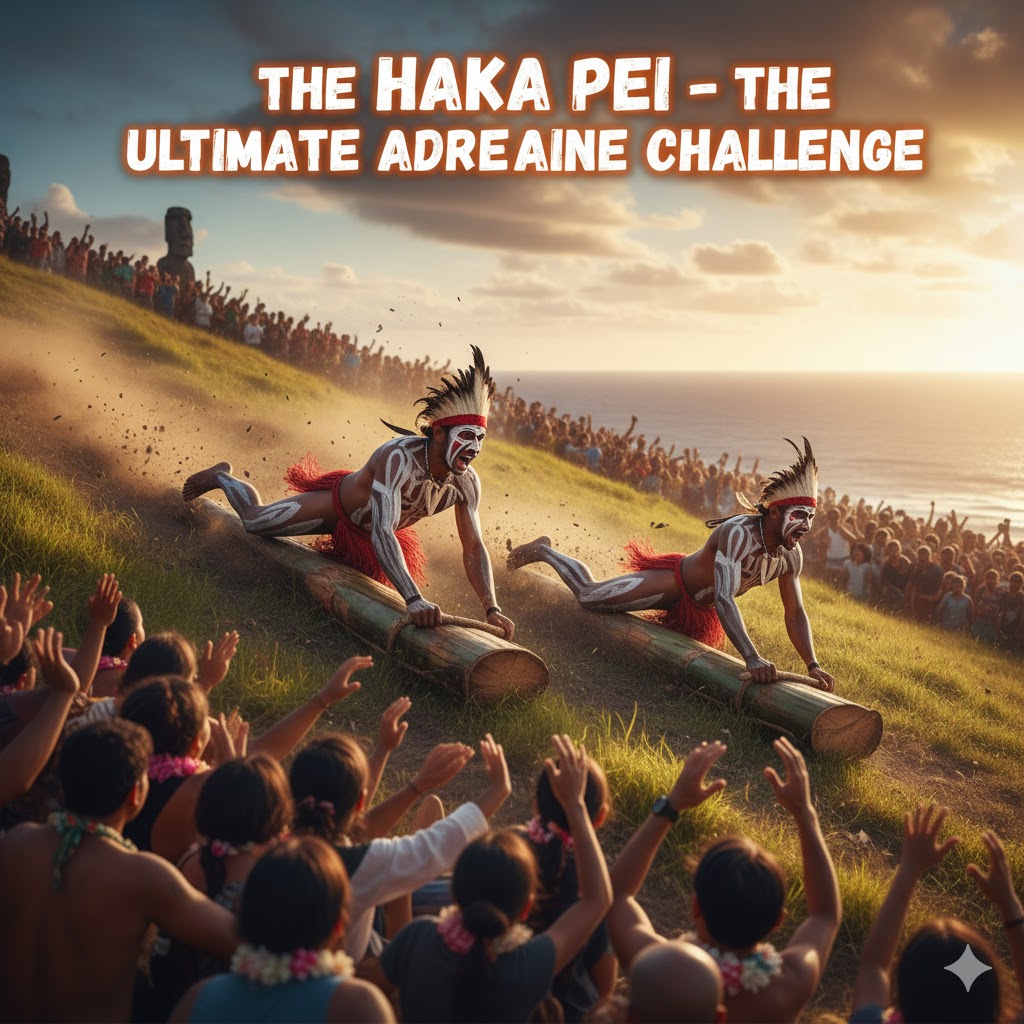
2. Traditional Dance Competitions
Each clan showcases traditional Polynesian dances under torchlight, telling stories of gods, love, and the sea. The mesmerizing rhythm of the drums and the vibrant costumes make these performances truly unforgettable.
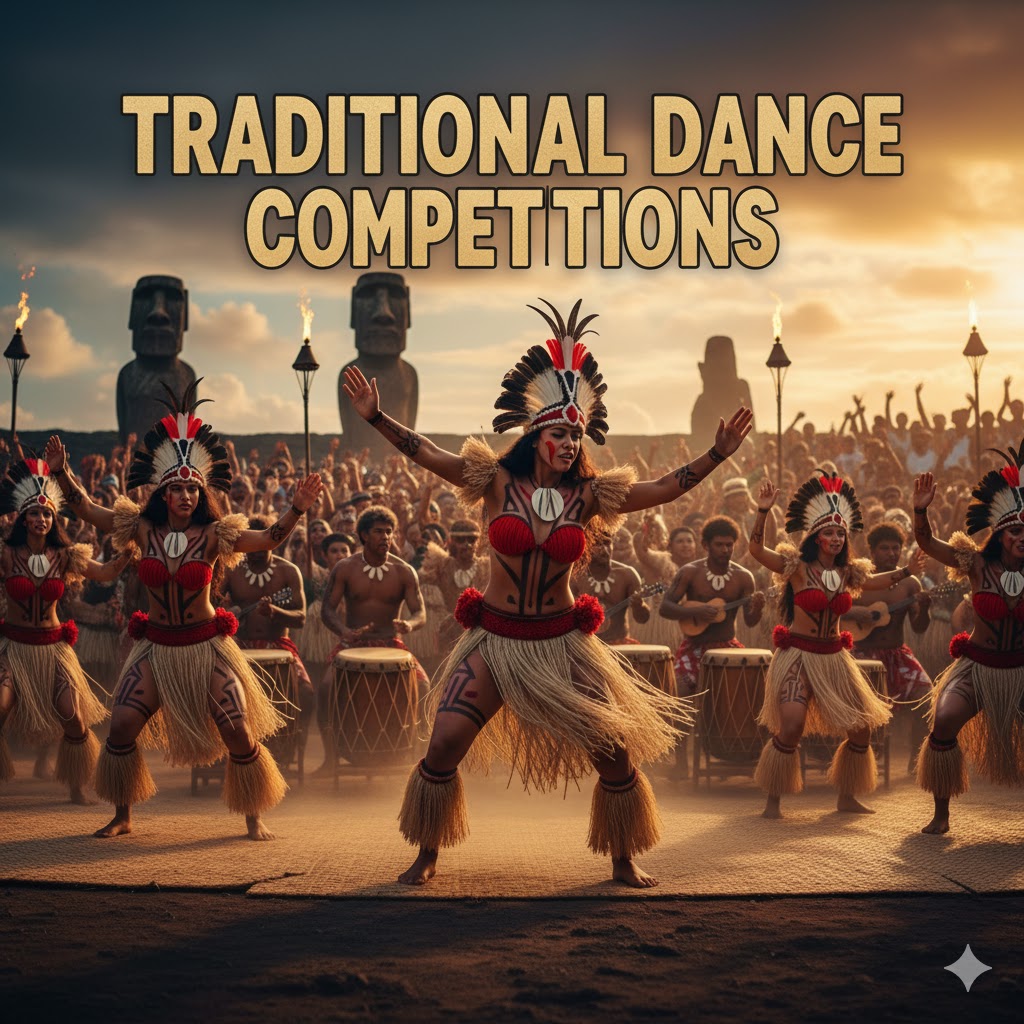
3. Body Painting and Cultural Parades
The islanders adorn themselves with intricate body paintings using natural pigments, each design carrying a symbolic meaning tied to family and spiritual connection.
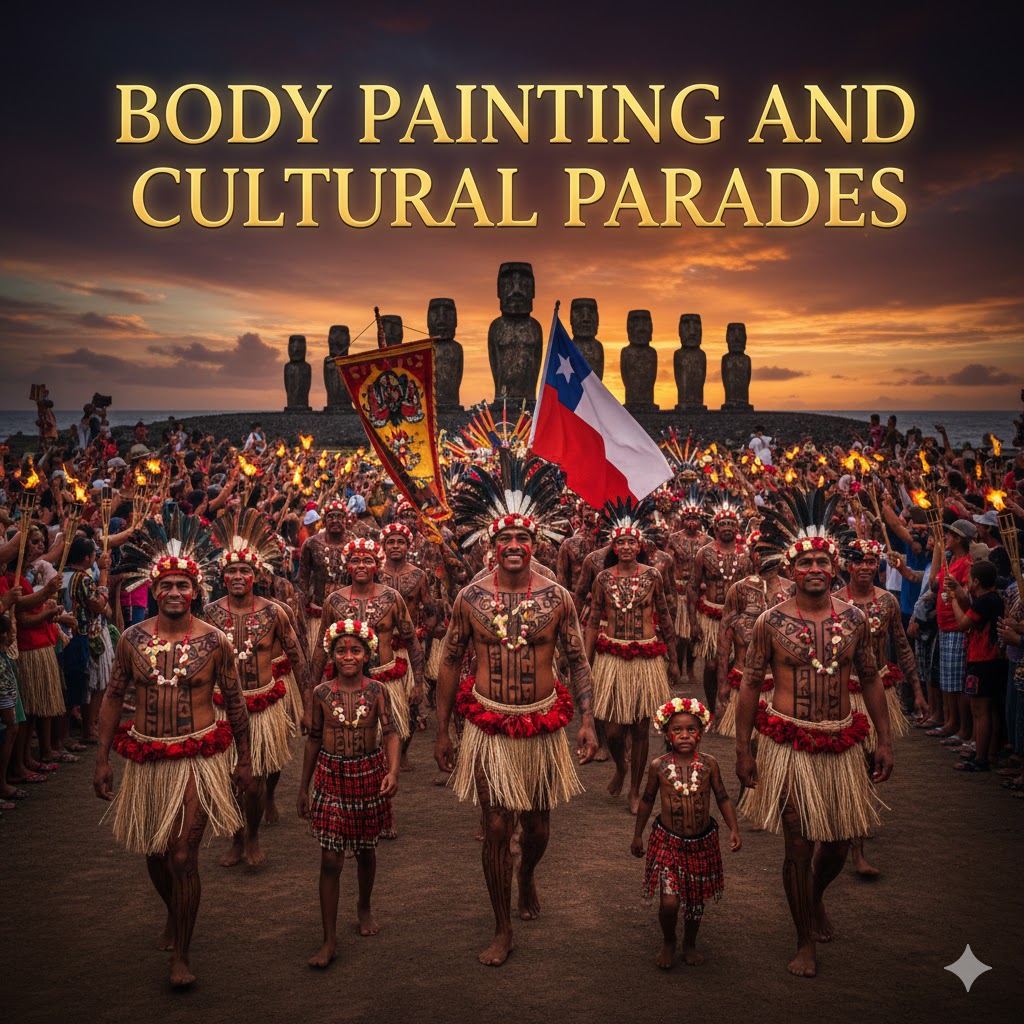
4. Canoe Races and Horse Riding
Men and women compete in Polynesian-style canoe races across the island’s clear blue waters, and bareback horse races test speed and endurance on the open plains.
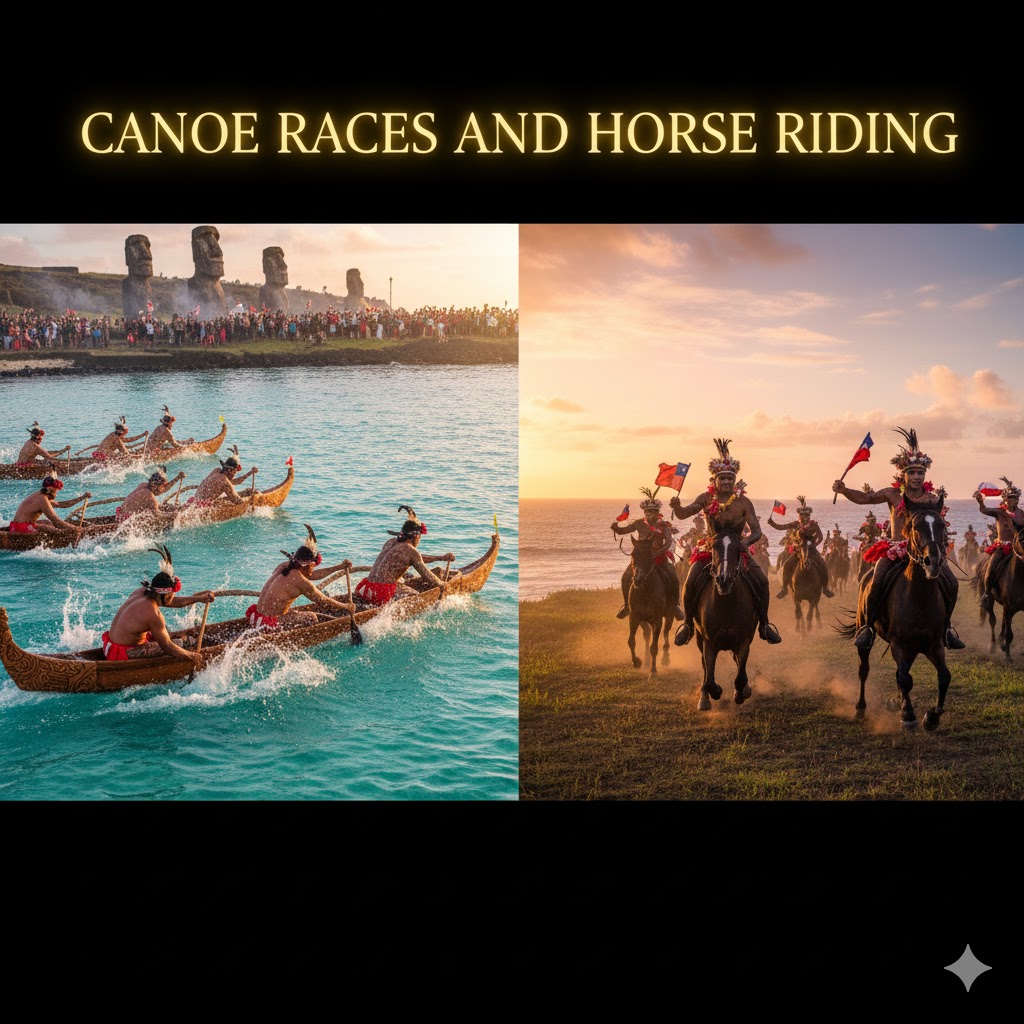
5. Crowning of the Tapati Queen
The grand finale of the festival is the coronation of the Queen, chosen based on her family’s overall performance in the competitions. The crowning night features live music, fireworks, and a celebration that lasts until dawn.
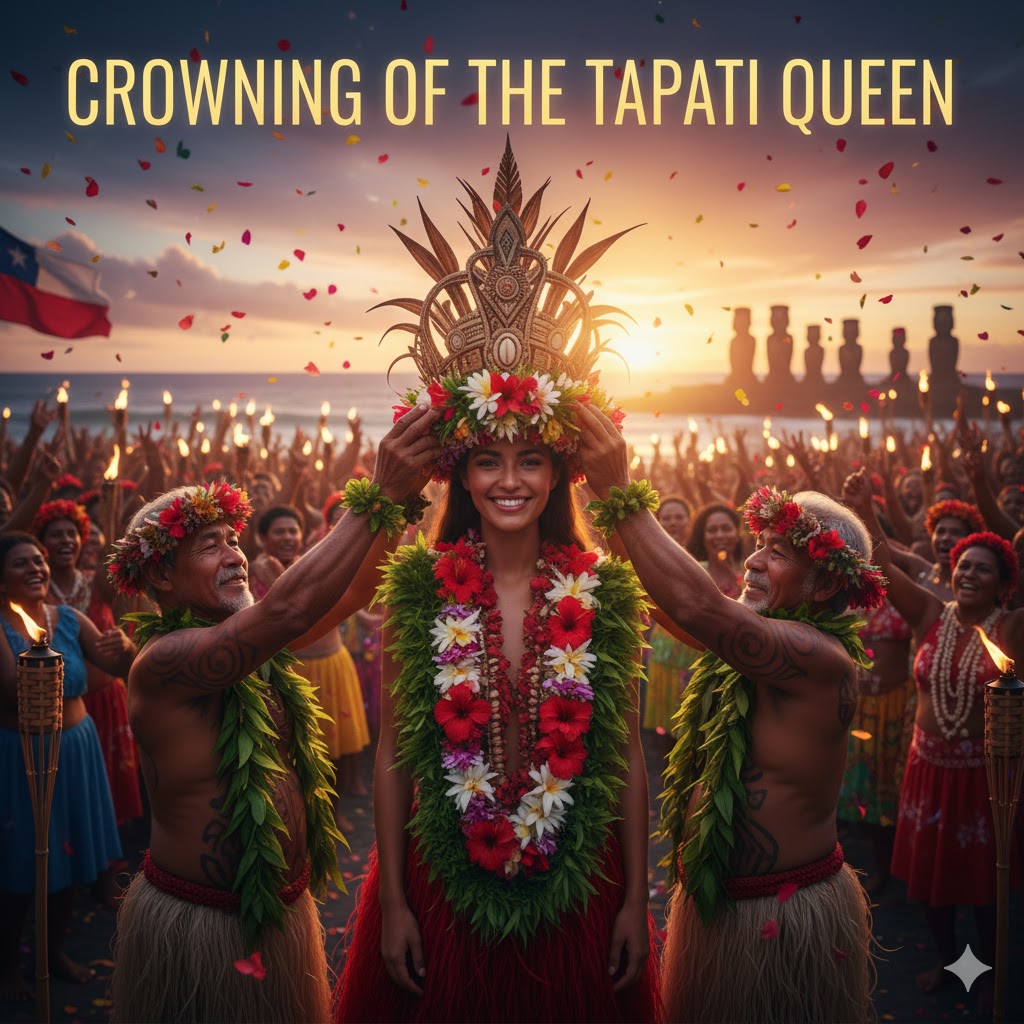
Cultural Significance: A Living Connection to the Past
Tapati is more than entertainment — it’s a sacred act of cultural preservation. For the people of Rapa Nui, it’s a way to teach younger generations about their origins, legends, and the importance of community.
Tourists are not just spectators; they’re invited to participate, learn, and immerse themselves in Rapa Nui’s living traditions. Every chant, every dance step, and every ritual connects participants to the island’s ancient ancestors.
How to Get There
Flights:
Easter Island is accessible via flights from Santiago, Chile, operated primarily by LATAM Airlines. The journey takes about 5 hours.
Accommodation:
During the festival, hotels and guesthouses in Hanga Roa fill up quickly. It’s best to book 4–6 months in advance. Options range from cozy family-run lodges to luxury eco-resorts overlooking the Pacific Ocean.
Source: LATAM Airlines – Flights to Easter Island
Food and Local Cuisine
During Tapati, food stalls pop up across the island offering authentic Polynesian and Chilean dishes, such as:
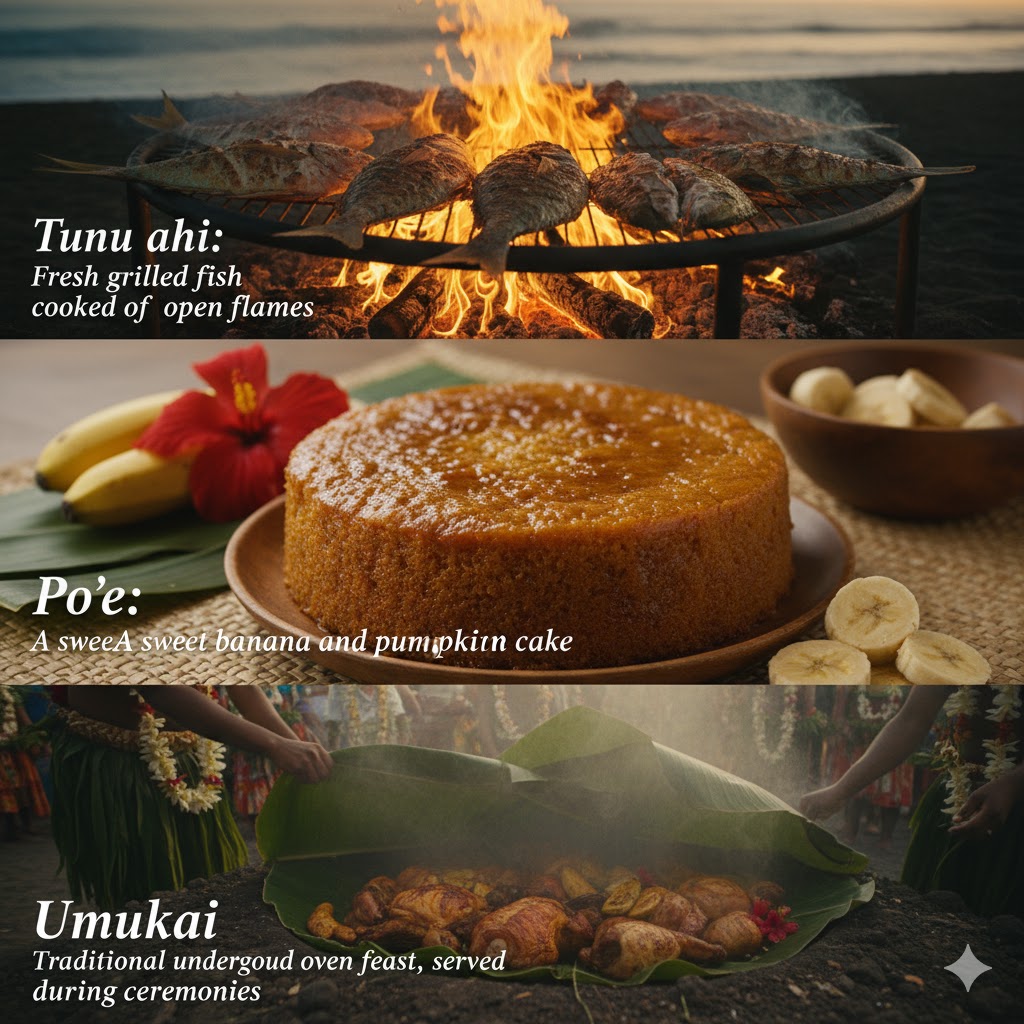
- Tunu ahi: Fresh grilled fish cooked on open flames
- Po’e: A sweet banana and pumpkin cake
- Umukai: Traditional underground oven feast, served during ceremonies
The festival’s culinary experience blends ancient island cooking with modern Chilean flavors.
Best Photo Spots During Tapati Festival 2026
- Ahu Tongariki – Iconic lineup of 15 Moai statues at sunrise.
- Anakena Beach – White sands and turquoise waters, with traditional performances.
- Maunga Pu’i Volcano – Haka Pei competition area.
- Hanga Roa Town Center – Cultural parades and nightly music.
- Tahai Ceremonial Complex – Perfect for sunset photos with Moai silhouettes.
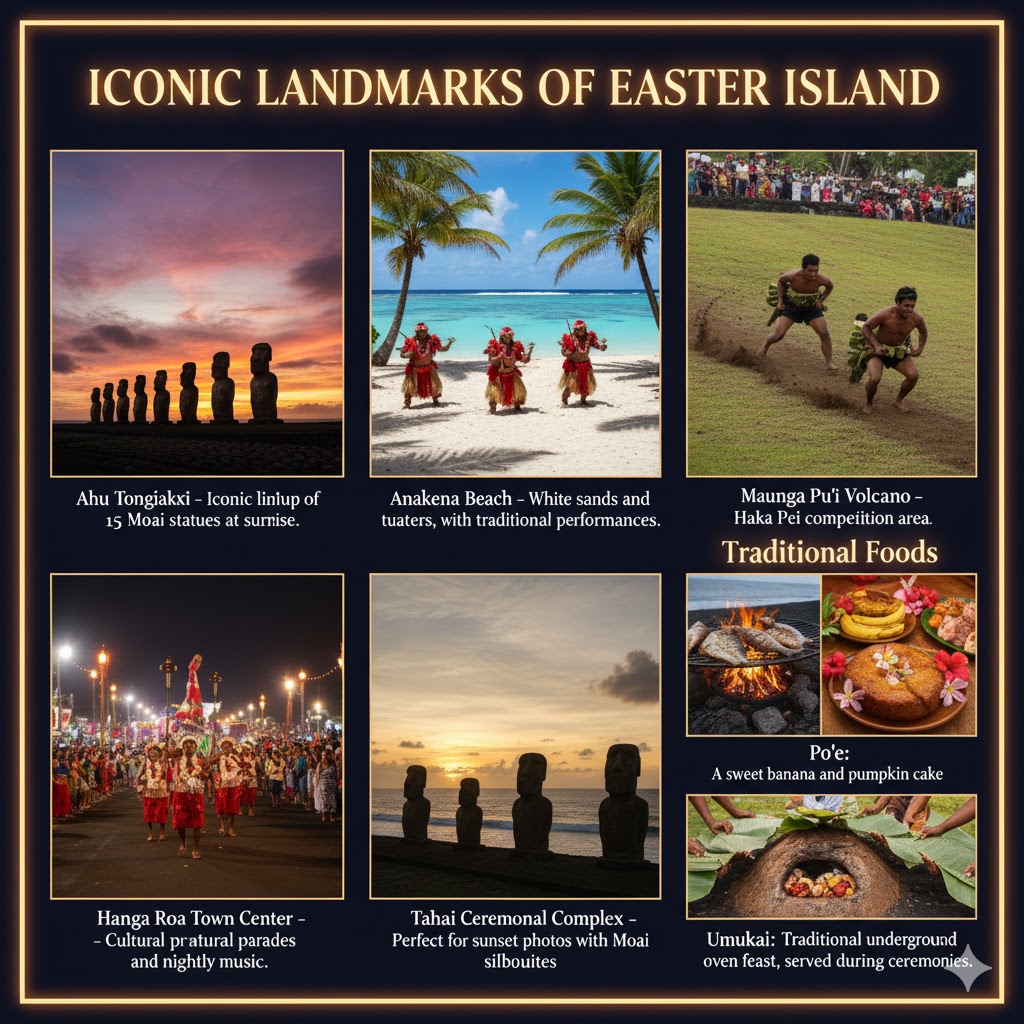
Essential Travel Tips for Tapati Festival 2026
- Book Early: Flights and hotels sell out fast during Tapati.
- Carry Cash: ATMs are limited on the island.
- Respect the Culture: Always ask permission before taking close-up photos of performers.
- Join Local Workshops: Participate in body painting, dance, or music sessions for a deeper experience.
- Protect Heritage Sites: Do not touch or climb the Moai statues — they are sacred.
Check Also: Rio Carnival 2026 in Brazil
Eventers: Embrace the Magic of Tapati 2026
The Tapati Festival 2026 in Chile is more than an event — it’s a spiritual journey through history, art, and identity. Whether you’re drawn by the thrill of competition, the warmth of Polynesian culture, or the breathtaking landscapes of Easter Island, Tapati promises a once-in-a-lifetime experience.
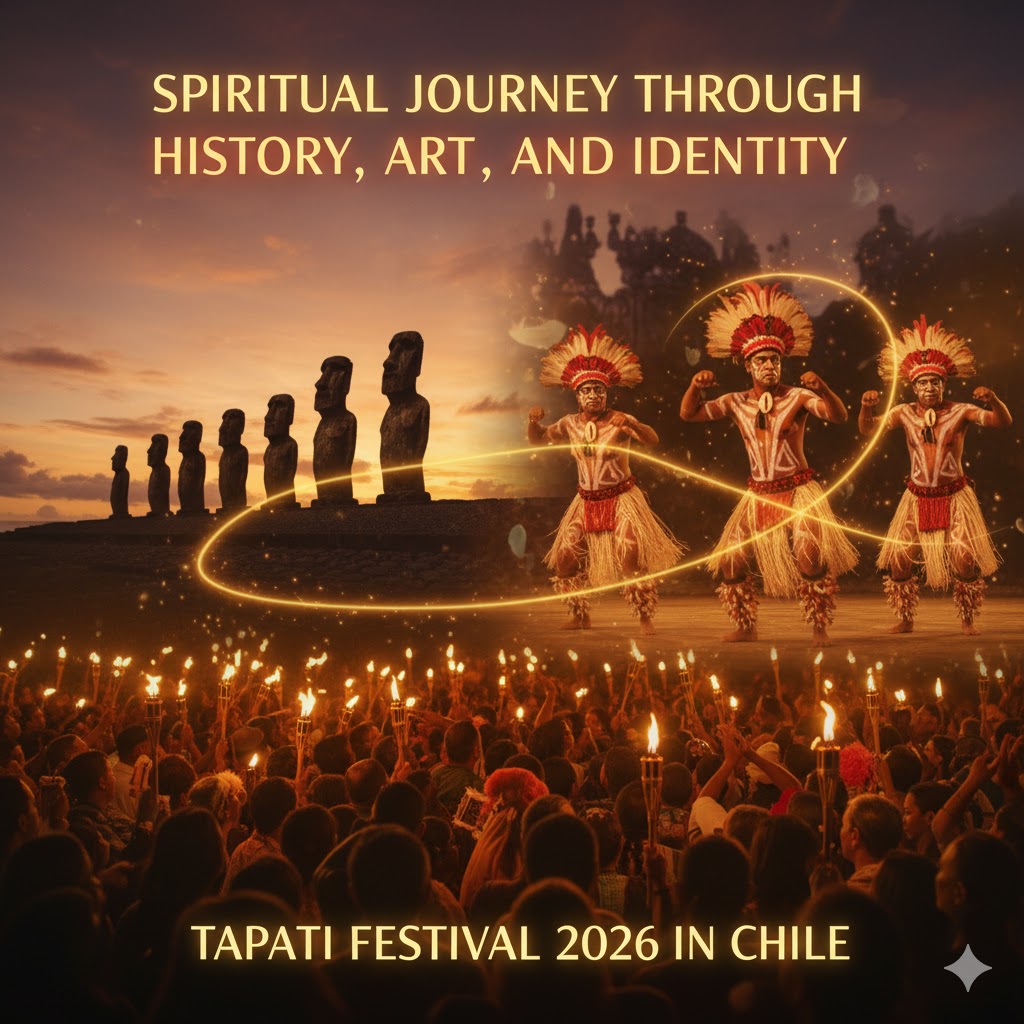
Immerse yourself in the chants, dance under the stars, and feel the heartbeat of an ancient civilization still alive today.

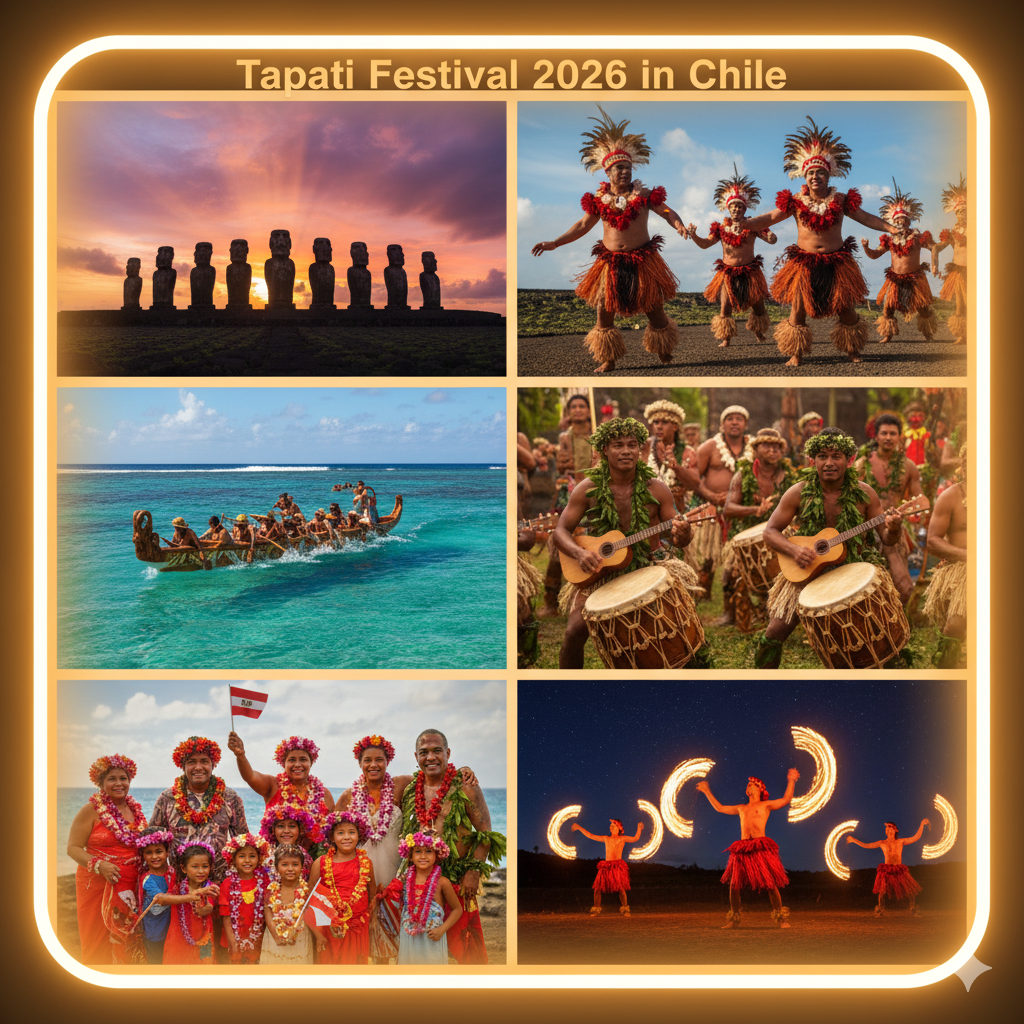


Pingback: Spectacular Carnaval de Barranquilla 2026 in Colombia